Fix: One Monitor Brighter than the Other
Nowadays, if you are using your computer for education or business, it is difficult without having at least two monitors. The best practice would be to have the same models, so design and tech specifications are the same. In the end that will also result in great user experience.

Unfortunately, sometimes we are not able to have the same monitors. Having said that, it is difficult to have similar color settings. Many end-users are complaining about the scenario where one monitor is brighter than the other one. There are a few ways how to customize it, but it is almost impossible to have it identical completely. This is because if the monitors are with different builds, their color quality will be never matched 100%.
In our scenario, we have two Dell U2518D monitors that are connected to graphics card Radeon R570 via Display port cables.
Note: Make sure that you calibrate the monitors individually as well using their own physical brightness and contrast settings.
Solution 1: Calibrate your monitor
Proper calibration of your monitor will increase color quality and improve user experience. In this article, we will show you how to calibrate Dell monitor on Windows 10. We do recommend reading official technical documentation for your monitor or notebook. You can download it on the manufacturers’ website.
There are two methods of calibrating monitor or notebooks’ display. The first method is by calibrating monitors by using native Windows tools and the second one is by using dedicated software tools developed by the vendors who have made the monitor. Make sure that after Calibrating the Monitors, you restart your computer before comparing them again.
Solution 2: Adjust color settings
If you have two identical monitors, but experiencing different colors and brightness, you should check if the color settings are also identical. You can do it by checking settings directly on the monitor in the main menu, by using dedicated software developed by vendors, or even by using software that comes with graphics cards, such as AMD Radeon Software or NVIDIA Control Panel. We will show you how to configure color settings (brightness, hue, contrast, saturation, and resolution) on both monitors by using AMD Radeon Software, graphic card Radeon R730.
- Open Radeon Software (right-click on the Desktop > ADM Radeon Software)
- Click on Adjust Global Graphics
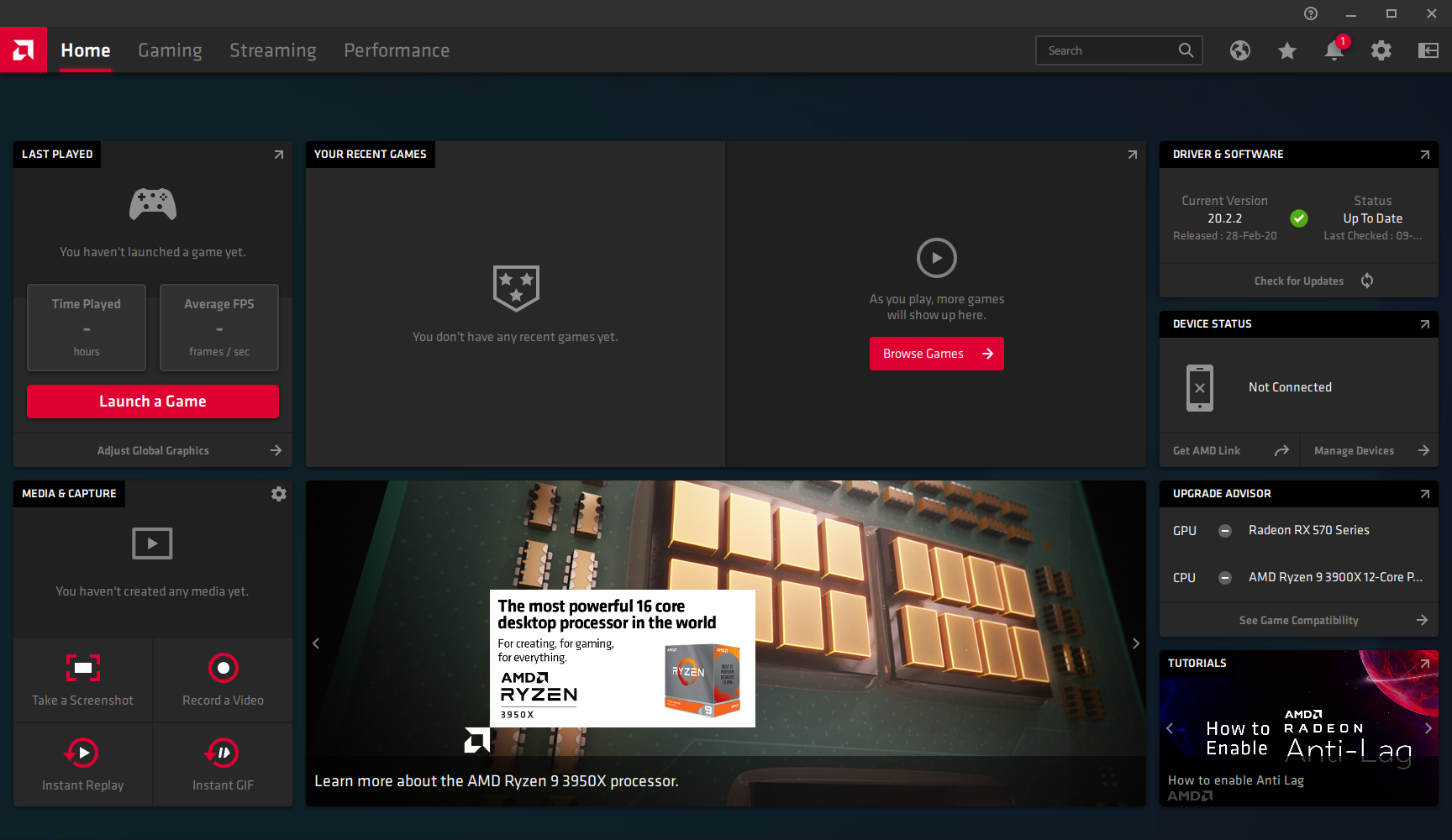
- Click on Display. Configure color settings based on your needs. The settings must match on both monitors. As you can see, we have two monitors connected via Display port on graphics card Radeon RX 570.
Display 1:
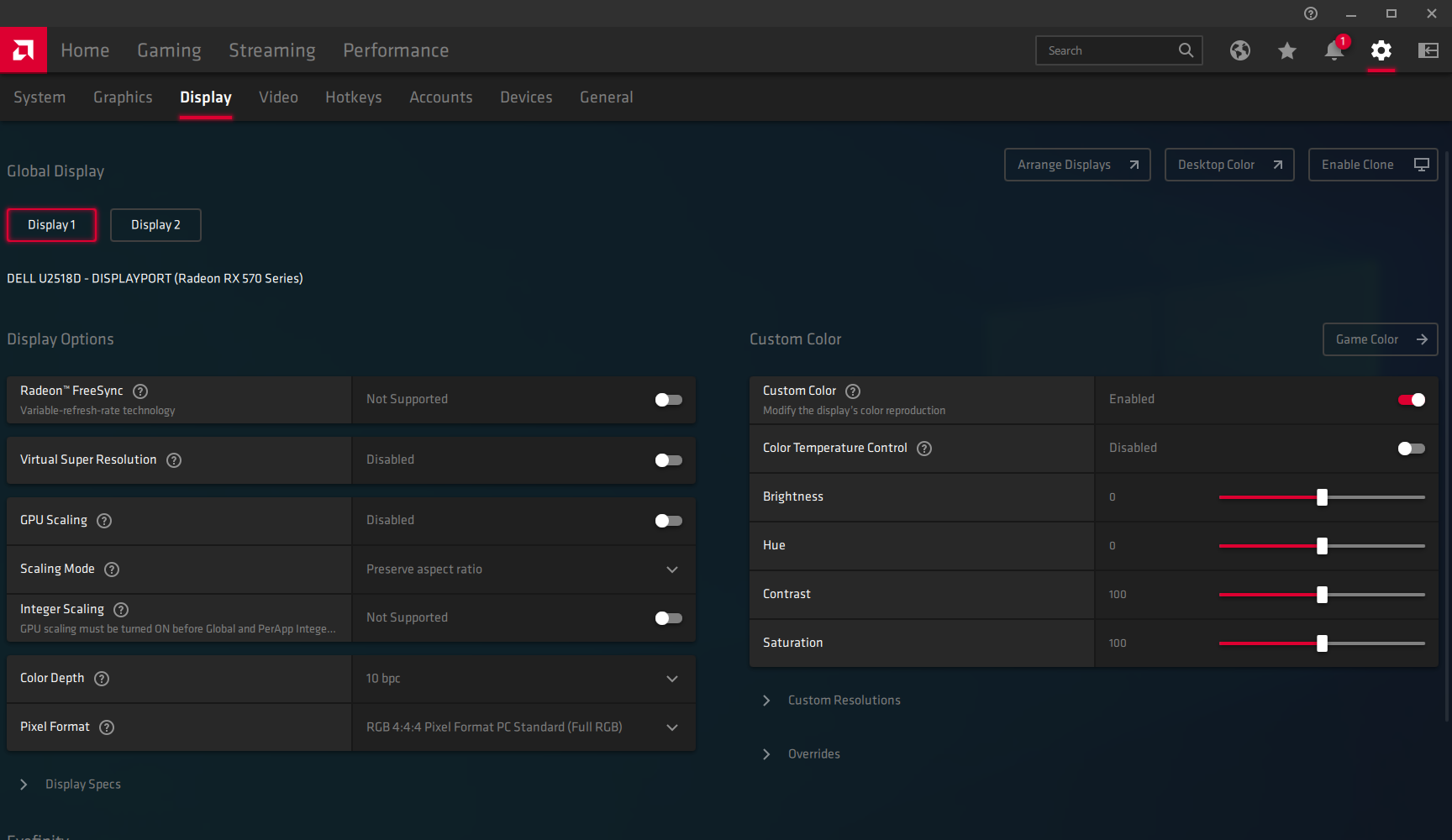
Display 2:
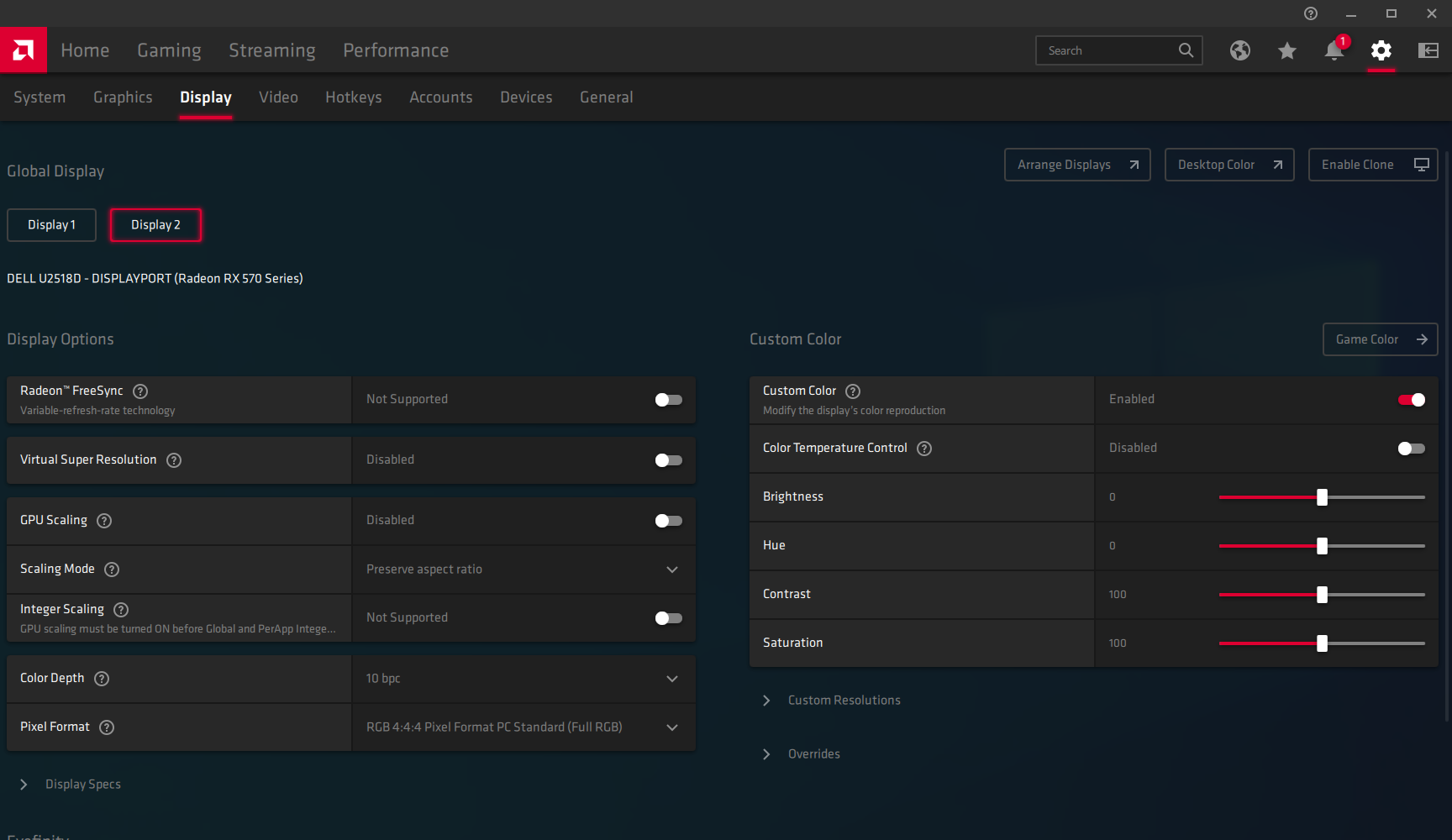
- Close Radeon Software. Restart your computer and check if the ratio of brightness is fixed.
Solution 3: Restore both monitors to Factory Defaults
The monitor can be restored in two ways, in the monitor’s main menu or by using official or third-party tools. As there are many different vendors and models out there, we will show you how to restore it by using a third-party tool called softMCCS.
softMCCS is a purpose-built diagnostic and compliance application, providing communication through the widest variety of GPUs and compatibility with all x86 and x64 versions of Windows, from the original retail release of Windows 95 onwards. The softMCCS can communicate via any host-side graphics controller from AMD, Intel, and NVidia, as well as legacy controllers from 3dfx, 3dlabs, ATI, C&T, Cirrus Logic, Matrox, NeoMagic, Number Nine, Rendition, S3, Silicon Motion, SiS, Trident, VIA, VideoLogic, or XGI – over VGA, DVI, HDMI, DisplayLink or DisplayPort interfaces.
- Open the Internet browser and go to this website.
- On the left side click on the softMCCS button to download the latest setup file. Currently, the latest version is 2.5 and the file is around 1.5 MB.
- Run the installer and follow the instructions to install the softMCCS.
- Launch It should detect monitor(s) connected to the graphic card. As you can see, softMCCS has detected monitor DELL U2518D.
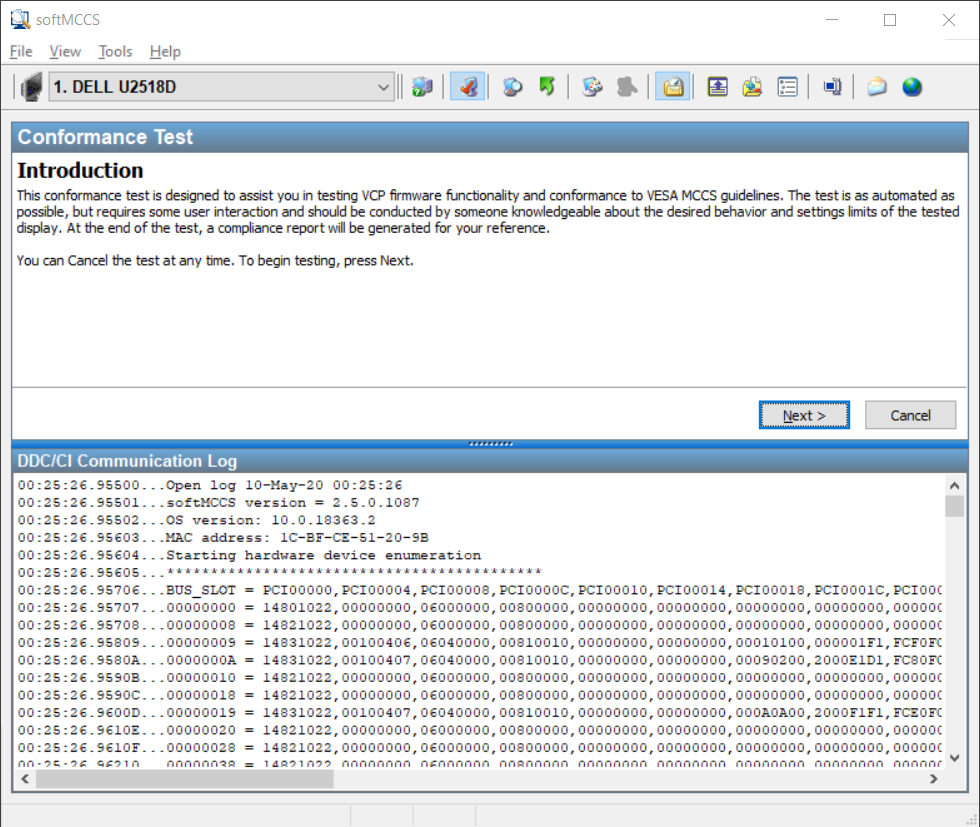
- Go through an introduction or skip it by clicking on Cancel.
- Click on the Tool in the main menu.
- Click Restore factory defaults.
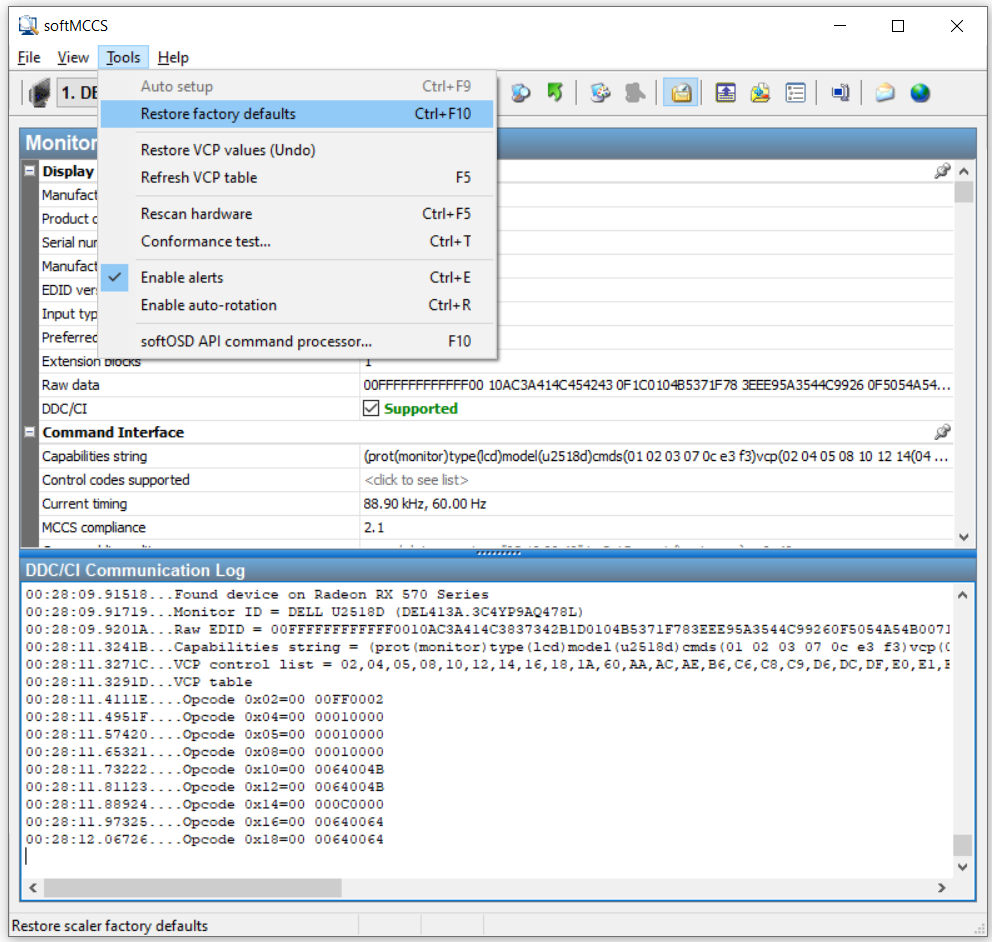
- Please repeat the procedure on the second monitor.
Solution 4: Change connector (if possible)
There are multiple video connectors out there including VGA, DVI, HDMI, and Display port. Nowadays VGA and DVI are rarely used, but HDMI and Display port. Different video ports can support different resolutions and have different qualities. We can not expect the same quality with VGA and HDMI or between DVI and Display port. To take the best of our monitors and graphics card, we do recommend using HDMI or Display port on both monitors. If that is not possible, there are no other options left, but buying a new graphics card, monitor, or machine.




